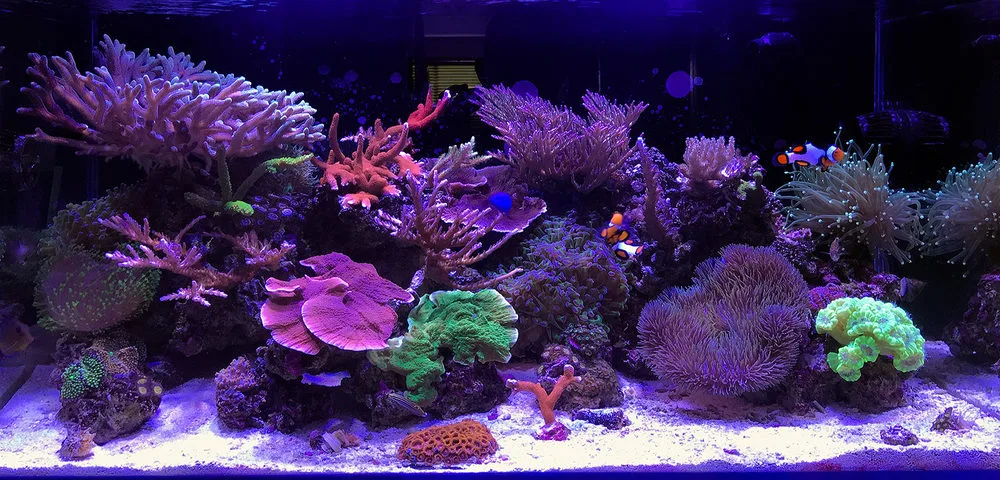Stunning 48-Gallon Reef Tank – Zuma's TOTM | NanoReef

Tank Specifications
Volume: 48 Gallons / 181 Liters
Dimensions (L × W × H):
36.0" ×
18.0" ×
18.0"
91.4cm ×
45.7cm ×
45.7cm
Equipment List
- Salt: B-Ionic
Frequently Asked Questions
How often should I perform water changes in my reef tank?
It is recommended to perform a water change once a week. In this tank, a 5-gallon water change is done weekly to maintain water quality.
What is the best way to clean algae off the glass?
It is advisable to clean the algae off the glass about twice a week. Use a magnetic algae scraper or an aquarium-safe glass cleaner to effectively remove algae without scratching the glass.
How can I manage detritus accumulation in the sump?
Detritus can be siphoned out during your weekly water change routine. This helps maintain water quality and ensures the sump stays clean.
Should I test the water parameters regularly?
It's a good practice to test water parameters regularly, especially in the initial months. Once the tank is stable, testing once a month is often sufficient.
How do you clean the protein skimmer?
The skimmer cup should be emptied and cleaned during your weekly water change. Rinse it with fresh water to remove any residue.
How often should I feed the fish in my reef tank?
Feed your fish once a day. In this tank, one cube of food is given daily to ensure the fish receive adequate nutrition.
Is it necessary to provide supplements for coral growth?
Yes, as coral grows, they may require specific supplements such as calcium and alkalinity. This tank uses B-Ionic Calcium and Alkalinity dosing to meet the demands of growing SPS corals.
What lighting is suitable for a reef tank?
This tank utilizes 2 Radion XR15 G3 Pro lights with an AB+ schedule, which is effective for supporting coral growth in a reef tank.
How can I create a DIY sump for my aquarium?
When creating a DIY sump, consider the dimensions of a commercially available sump for guidance. It’s important to plan the baffles and spacing to create effective filtration and ensure the system functions well.
What equipment is needed for an effective reef tank setup?
Essential equipment includes a reliable protein skimmer, powerheads for circulation, a good quality heater, and a sump with filtration. Additional equipment may include an auto top-off system and lighting specific for coral growth.
What type of corals can I keep in a mixed reef?
In a mixed reef, you can keep a combination of soft corals, LPS, and SPS corals. This tank has a variety including Zoanthids, Candy Cane Coral, Duncan Coral, SPS corals like Montipora, and Acropora.
How do I introduce new fish to my tank safely?
Before introducing new fish, quarantine them in a separate tank for at least 2 weeks to observe for any signs of illness. After quarantine, gently acclimate them to the tank environment to reduce stress.